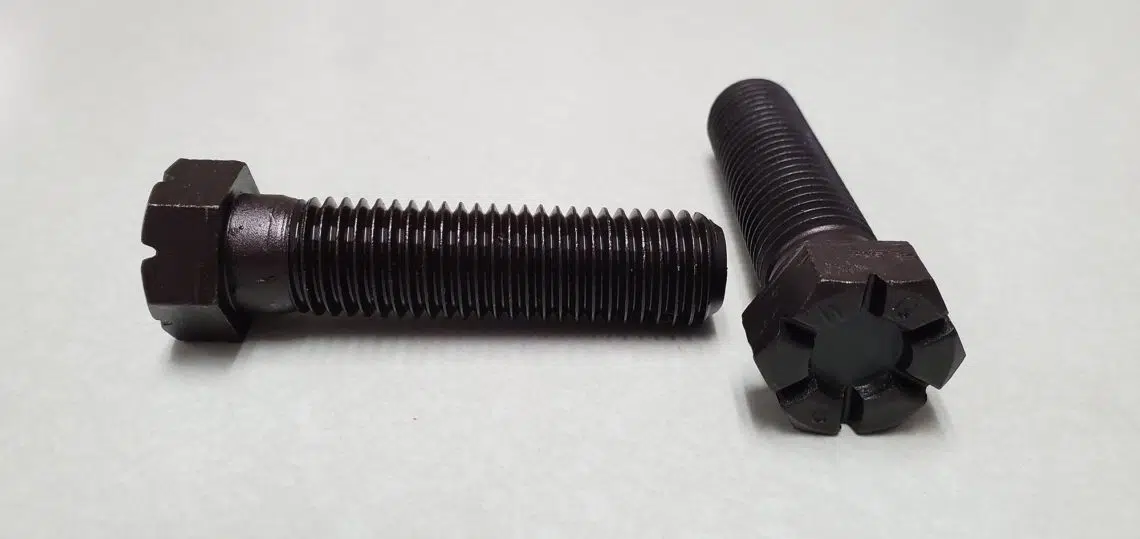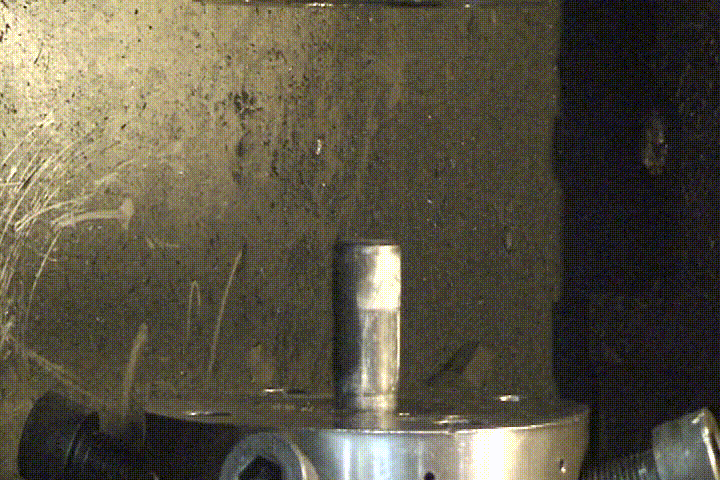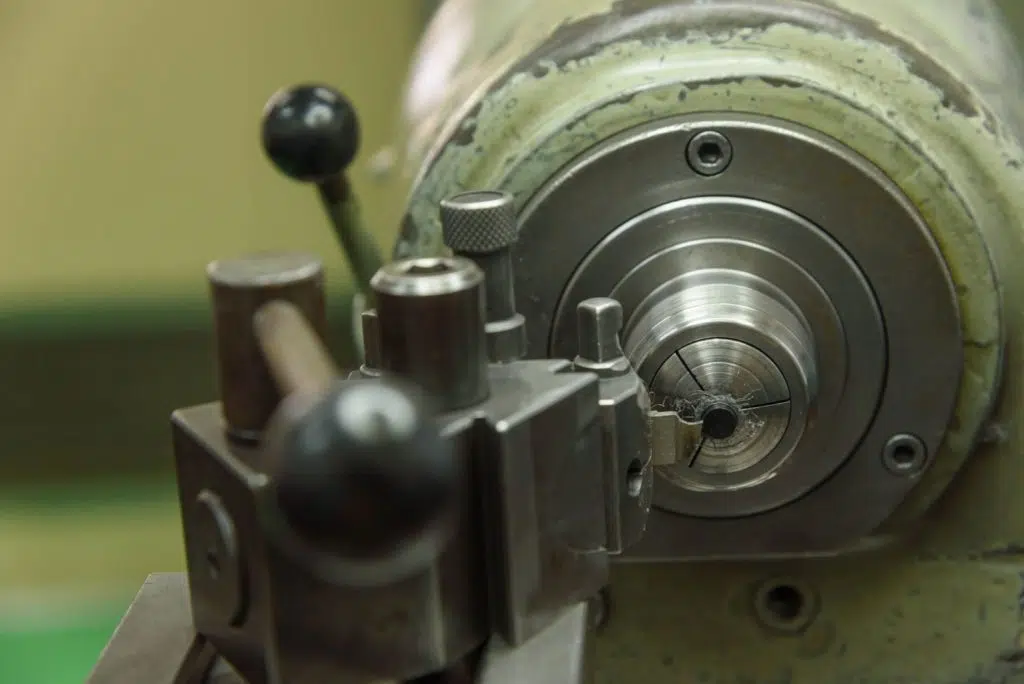There are three common steel bolt manufacturing methods: cold forming, hot forging, and machining. In this article, we’ll discuss each of them and point out their varying benefits and drawbacks. Here’s a preview of the information we’ll cover:
Cold forming – Bolsters strength and minimizes waste, but has size and shape limitations
Hot forging – Reduces waste and has few size and shape limitations, but doesn’t enhance strength
Machining – Ideal for producing complex shapes, but creates a lot of waste and reduces strength
Read on for a more comprehensive description of these methods, and to learn more about which one may be best for your application.
3 Ways to Make Steel Bolts — Cold Forming vs. Hot Forging vs. Machining
In the sections below, we’ll discuss cold forming, hot forging, and machining in more detail — comparing each of their advantages and disadvantages in the context of size and shape, waste, strength, and material.
1. Cold Forming Steel Bolts
Cold forming, or cold heading, is the process of forming a bolt without heating up the steel. This is accomplished by striking or pressing steel within a form, or die, in order to create desired dimensions. Many times, more than one strike is required.
Size & Shape (-)
There’s a limitation to the size of bolts you can manufacture by cold forming. The bigger the diameter of a bolt, the more pressure is needed to push the material into the desired shape. Given a big enough machine, you could make as big of a bolt as you wanted — but at some point, the sheer size of the machine needed to cold form steel becomes impractical.
Cold forming also has limitations to what shapes can be formed. Innovations in technology have vastly improved the capabilities of cold forming, but even today, some parts can be extremely difficult or even impossible to form without heating or cutting the material.
Waste (+)
With cold forming, you’re forming the material into the shape you want, without removing any material, and without using energy to heat material. Therefore, cold forming has a great advantage in terms of reducing material and energy waste.
Strength (+)
The process of cold forming adds strength to a bolt in a process called work hardening. Because the steel is moved without being cut or heated, its grain structure remains intact. The grains flow with the contours of the part, adding strength.
Material (+/-)
Different metals and alloys behave differently. Materials like alloy steel are ductile enough at room temperature to cold form easily. Others like low carbon steel benefit from the added strength from cold forming.
However, there are plenty of materials that don’t lend themselves to cold forming very well, such as stainless steel. Or, there are cases where the work hardening imparted by cold forming can restrict the amount of material flow, making it difficult to achieve the desired shape.
2. Hot Forging Steel Bolts
Hot forging is the process of heating up steel to a point where it becomes malleable, and then forming it in a die.
Size & Shape (+)
Heating steel beyond its recrystallization point causes it to become considerably more ductile, thereby allowing the parts to be formed using less pressure. For this reason, most sizes of bolts can be hot forged. In fact, it’s usually the preferred manufacturing method for large diameter bolts.
Similarly, heating steel and increasing its ductility allows for more variations in shape. It’s a good alternative to configure unique bolt shapes that aren’t manageable with cold forming.
Waste (+/-)
Just like cold forming, hot forging allows you to get the bolt shape you want without removing any material. However, it does require some additional energy to heat the steel. So while you may save on some material waste, you may also spend a little more on energy consumption.
Strength (-)
Hot forging doesn’t allow for much work hardening to occur. While it keeps some of the steel grains intact, the strengthening effect is limited because heating steel modifies its grain structure a bit.
Material (+/-)
Different materials call for different methods. As a general rule of thumb, if the material won’t work with cold forming or machining, hot forging is a good alternative. There are materials that don’t cold form or machine well and need to be heated to high temperatures in order to form properly.
3. Machining Steel Bolts
Machining is the process of cutting away steel to fit desired dimensions.
Size & Shape (+)
Machining doesn’t have size or shape limitations. In fact, complicated parts can be machined relatively easily, making this the preferred manufacturing method for intricately shaped bolts.
Waste (-)
When you machine a part, you achieve the desired shape by removing material. Therefore, arguably the biggest disadvantage of this bolt manufacturing method is the amount of material waste it produces.
Strength (-)
Grain flow is interrupted, and work hardening doesn’t occur when you remove material — so there’s no added strength to the bolt. This can be an issue for applications that require high tensile strength and durability.
Material (+/-)
Sometimes, it’s just easier to machine a part rather than struggle to form it properly. Some types of aluminum, for example, lend themselves quite well to machining. It all depends on the specific type of material that you’re working with and how it handles being cut away.
Learn More About Our Steel Bolt Manufacturing Processes at Wilson-Garner
Cold forming, hot forging, and machining are all acceptable methods commonly used to manufacture steel bolts. The key to success, however, is knowing which method to employ in a given situation. At Wilson-Garner, we primarily utilize cold forming, but we’ll also employ machining when it makes sense to do so. If you’d like more information about our company, our specialty fasteners, or our manufacturing processes, give us a call at 800-656-2658 or contact us online.





